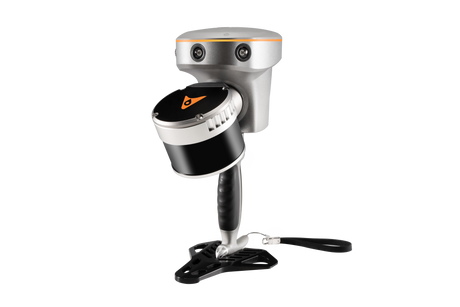Are All Lidars Created Equal?
Think Again!
In the world of precision mapping, Lidar (light detection and ranging) technology stands out. But beware, not all Lidars are created equal. When choosing a Lidar for your needs, digging into the technical specifications is a must—advertisements don't always paint the full picture.
Let’s break down the critical specs to consider:
🎯 Accuracy/Precision:
Manufacturers will claim their Lidar system's accuracy, but how it's presented matters. Absolute accuracy is typically double that of standard deviation (SD), a number some use to appear more precise. Also, check the stated accuracy against operational conditions like distance (height) and speed.
⚖️ Weight:
The weight of your Lidar system directly affects flight time and productivity; heavier systems result in shorter missions. Ensure to inquire about the total weight, including all necessary equipment.
🚀 Scan Speed:
This is about how many points per second the Lidar captures. Higher scan speed mean more ground point density and detail.
🌳 Vegetation Penetration (Returns):
Lidar can generate multiple returns from a single laser pulse. A higher number of returns is advantageous for penetrating dense forest canopies, allowing for a more detailed point cloud. Standard Lidars can capture up to 3 echoes, while high-end Lidars can capture 16 or even more echoes.
📐 Angular Resolution:
Lidar resolution refers to the degree of detail that can be identified in the scanned data. It determines the fineness with which the laser beams sample the surface, resulting in either a dense or sparse point cloud.
🛰️ GNSS Specifications:
The data collection rate and its support for all four constellations and frequencies (GPS; GLONASS; BEIDOU; GALILEO) can significantly impact performance.
🔄 IMU Update Rate and Accuracy:
The IMU (Inertial Measurement Unit) compensates for drone movement by measuring the aircraft's roll, pitch, and yaw. However, IMU-based accuracy degrades over time due to inherent drift, which varies with the IMU's quality. Therefore, selecting a Lidar with a high-quality IMU is crucial. Higher update rates (500Hz vs. 200-300Hz) and accuracy in pitch/roll and heading are essential.
📷 Camera Integration:
Does the Lidar come with a camera, or is it an additional cost? Verify the camera's resolution in megapixels (MP) and sensor size. The largest sensor size available is full-frame 35mm (36 x 24mm). Larger sensors lead to better image quality, creating images with a broader range of colors and more details in both the dark and bright parts of the photo.
📊 Laser Beam Divergence:
The laser beam divergence is defined as the angular measure of how the beam diameter increases with the distance from the laser aperture. A smaller beam footprint at your desired flight height results in cleaner, more precise data. Conversely, large divergence can lead to less defined, fuzzier surfaces, wires, and similar features.
🔗 Compatibility:
Can the Lidar be attached to different UAVs, and is it compatible with most popular UAVs?
💻 Software:
Inquire whether you need to purchase additional Lidar data processing software or if essential modules, such as trajectory adjustment and point cloud coloring, are included. Also, ask if the software operates standalone or requires cloud processing and whether updates are free or come at an additional cost.








